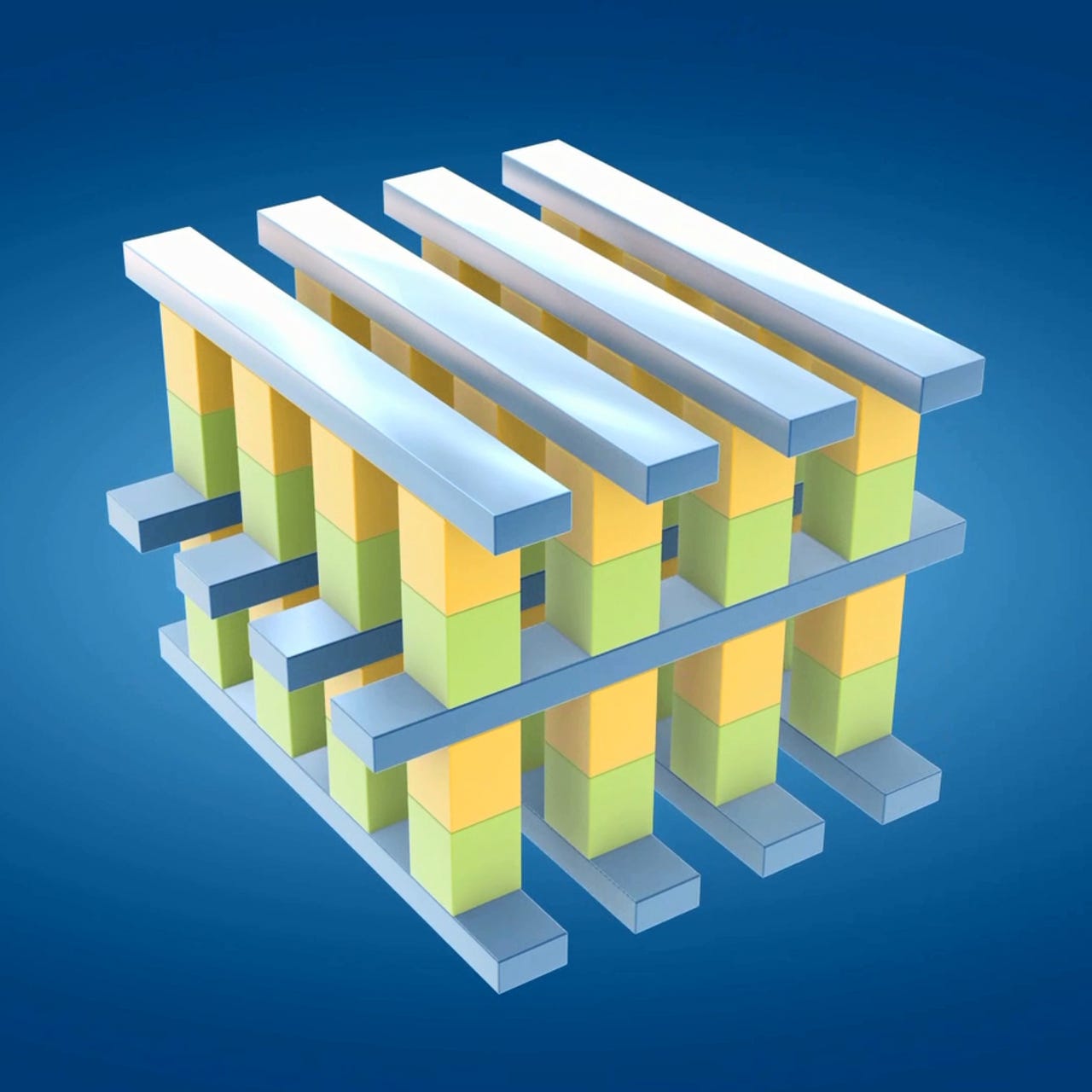Intel, Micron unveil 3D XPoint as first new class of memory tech in decades


Building off a partnership forged over the last decade, Intel and Micron jointly debuted a new memory storage technology on Tuesday.
Dubbed 3D XPoint, the transistor-less storage and memory platform is designed to offer a non-volatile, high-performance interface touting high-speed access to data and applications stored closer to the processor.
The two memory producers touted this is the first introduction of a new memory category since the debut of NAND flash in 1989.
3D XPoint is boasted to be at least 1,000 times faster matched by 1,000 times greater endurance than present-day NAND solutions on the market.
XPoint gets the 3D addition to the moniker through a crosspoint architecture with memory cells stacked multiple layers throughout a 3D structure. The initial iteration consists of 128 gigabytes per die stored across two memory layers.
Perpendicular conductors connect 128 billion memory cells with each cell storing a single bit of data.
"This is something many people thought was impossible, and many people gave up trying to accomplish," reflected Rob Crooke, senior vice president and general manager of Intel's Non-Volatile Memory Solutions Group, during a media presentation on Tuesday morning.
Hinting at just how much data is still in the pipeline just to be generated, Intel and Micron executives shared a forecast that the world will generate roughly 44 zettabytes in the next five years. For reference, one zettabyte is equal to one billion terabytes.
Intel and Micron said they are already developing products based on 3D XPoint with samples scheduled to start rolling out to select customers later this year.
Specific products weren't divulged, although Crooke listed possibilities running the gamut from gaming to mobile healthcare to DNA research.
Showing no signs of a summer slowdown, Intel has already had quite a big month -- most notably a solid second quarter earnings report two weeks ago.
Intel CEO Brian Krzanich credited the results to growth in three departments -- memory, data centers and the Internet of Things -- altogether of which he noted accounted for more than 70 percent of operating profit.
Those units also made up for continued pitfalls surrounding the PC space.
More Intel news can be expected soon as the tech giant's annual conference, Intel Developer Forum (IDF), is taking place in San Francisco a bit earlier this year from August 18 to 20.
Skylake, the code name for Intel's sixth-generation Core processor aimed at PCs, is also slated to drop during the second half of 2015.
Images via Intel